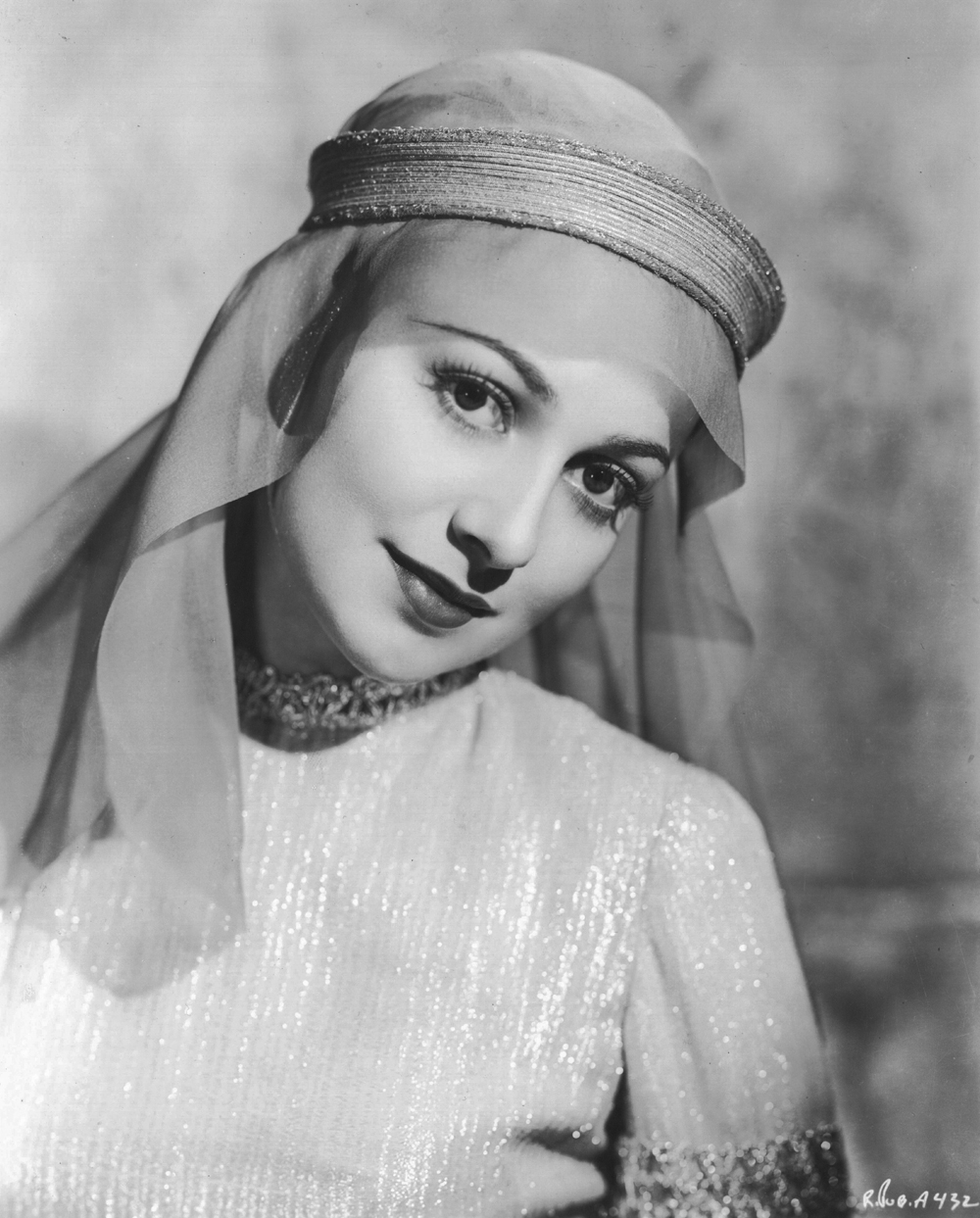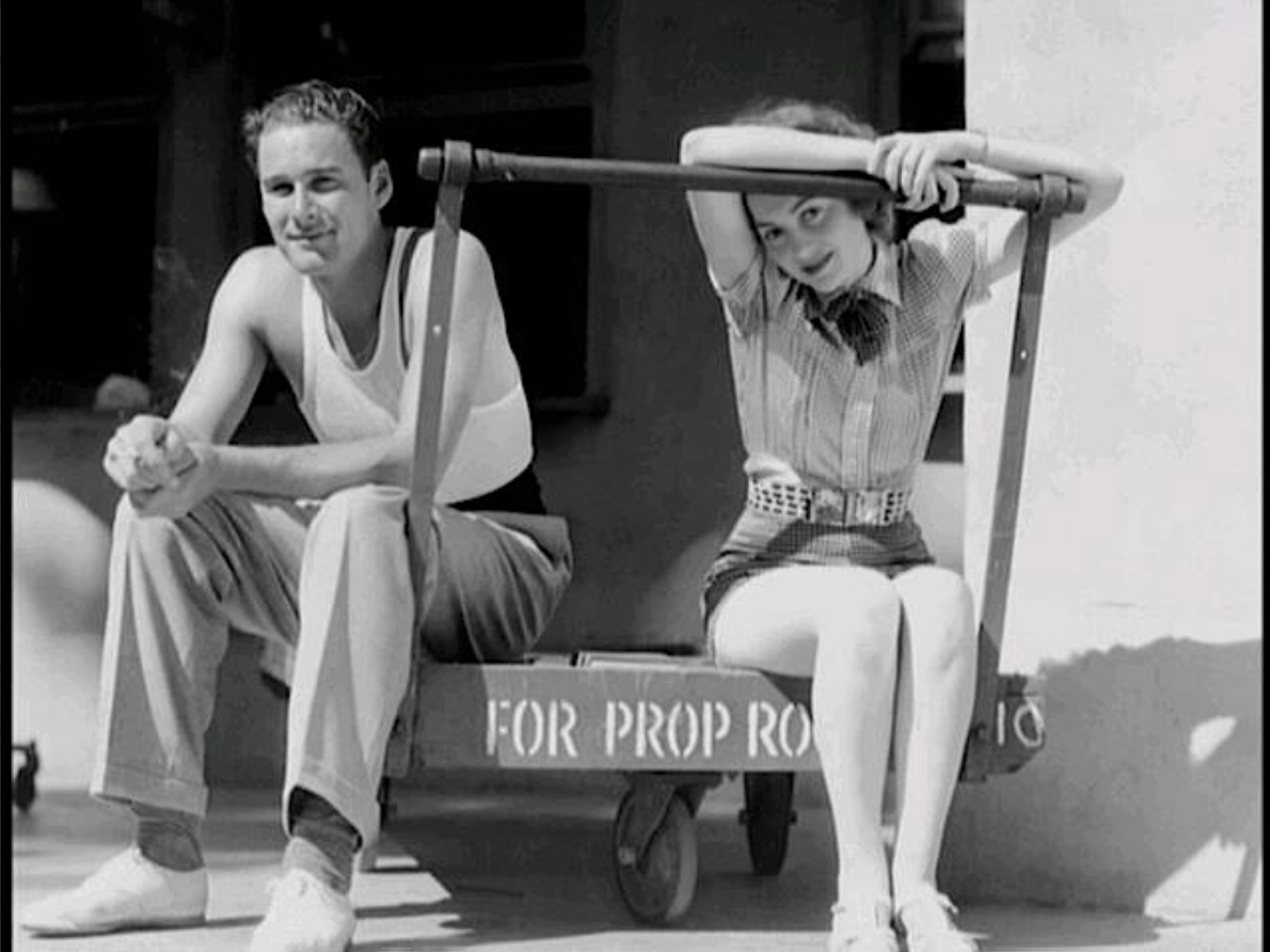
My mother spent 60 years in love with Clark Gable’s Rhett Butler, but never cared for the Olivia de Havilland rendition of Melanie Hamilton Wilkes. In fact, Mom called Melanie a “simp.” So this anti-Melanie bias in a home that otherwise revered the motion picture Gone With the Wind was my only exposure to Olivia de Havilland for years. Then as a freshman in college I saw The Adventures of Robin Hood for the first time, and zing went my heartstrings. I had seen widow’s peaked Melanie often enough, but the girl in the Maid Marian frocks was a different creature entirely, and in that scene where she literally lets her hair down—zowie!
<?xml:namespace prefix = o ns = “urn:schemas-microsoft-com:office:office” />
I’m sorry to disappoint you, Mom, but you just didn’t get Olivia de Havilland, because I’ll agree that in the early going earnest Melanie can come off as somewhere between bland and syrupy, but as GWTW unspools, her character is revealed to be one of utter strength and an ability to overlook human failings to see the truth in people and situations. Thanks in part to three great directors and to her own abilities, Olivia brought all that to her characterization in what was for a long time the most famous picture in Hollywood history.
I guess I’ve been writing a book about Olivia de Havilland in my head since that first time I looked up at her beautiful 30-foot-high face in the theater, with that flawless skin and those liquid brown eyes. It was a mad crush and it has never abated. We have corresponded on and off and I very much wanted her to participate in the creation of the manuscript that became the soon-to-be-released Errol & Olivia: Ego & Obsession in Golden Era Hollywood, but I never got her on board. She has always been old-school polite with me, and interested, and as earnest as Melanie, but there was an aspect where she knew she was tantalizing me with hints of a collaboration. I felt like she was trying to be enticing and even coy, but I’m a guy with a years-long crush, so there’s something grand in such enticement. I sent her a copy of Errol Flynn Slept Here to demonstrate that I’m not kidding around here; I am writing a book about Errol and Olivia. I sent her a detailed list of questions about Errol and their work together and their relationship offscreen. Questions about his scene stealing and insecurity and their date at the coronation ball and did he ever take her to Mulholland Farm?
When I realized after more than a year and a half that she wasn’t going to help me, as I recount in Errol & Olivia, it hit me hard, and like a jilted suitor, I let the disappointment color my writing to such an extent that when I showed the manuscript to colleagues, one of them wanted to know why I had written such a harsh book about Miss de Havilland. “After all,” said my colleague, “if at her age she doesn’t want to tell her story, that’s her right.” It was a simple fact that had eluded me, and I stepped back and realized that there was a chip on my shoulder, and I didn’t even know it. I believed I was telling a story that pulled no punches about either her or Errol (because I try to be a serious journalist, etc.), but when I went back and re-read it, I could see that I had gone astray.
So I fixed the problem. I think that, except for a few key passages, I wrote a book that Olivia can’t argue with, because the scholarship is rigorous and much of what’s there comes out of her own mouth. I’ve drawn a conclusion or two that I’m afraid she’s not going to like, but I admire her deeply. I admire her superficially for being the dish who won my heart as a freshman in college. I admire her deeply for being the fighter, and loner, and winner, and uncompromising survivor whom I discovered through the course of my research. This woman made a big stink for better roles in a studio run completely by men. This woman took major chances with her career and could have been banished from the picture business. This woman beat that great bully Jack Warner in court. This woman won two Best Actress Academy Awards in four years. This woman survived some very hard personal times and just celebrated her 94th birthday.
Yes, Mom had it wrong, but I think I ended up getting it right, and the crush endures.
— Robert Matzen

